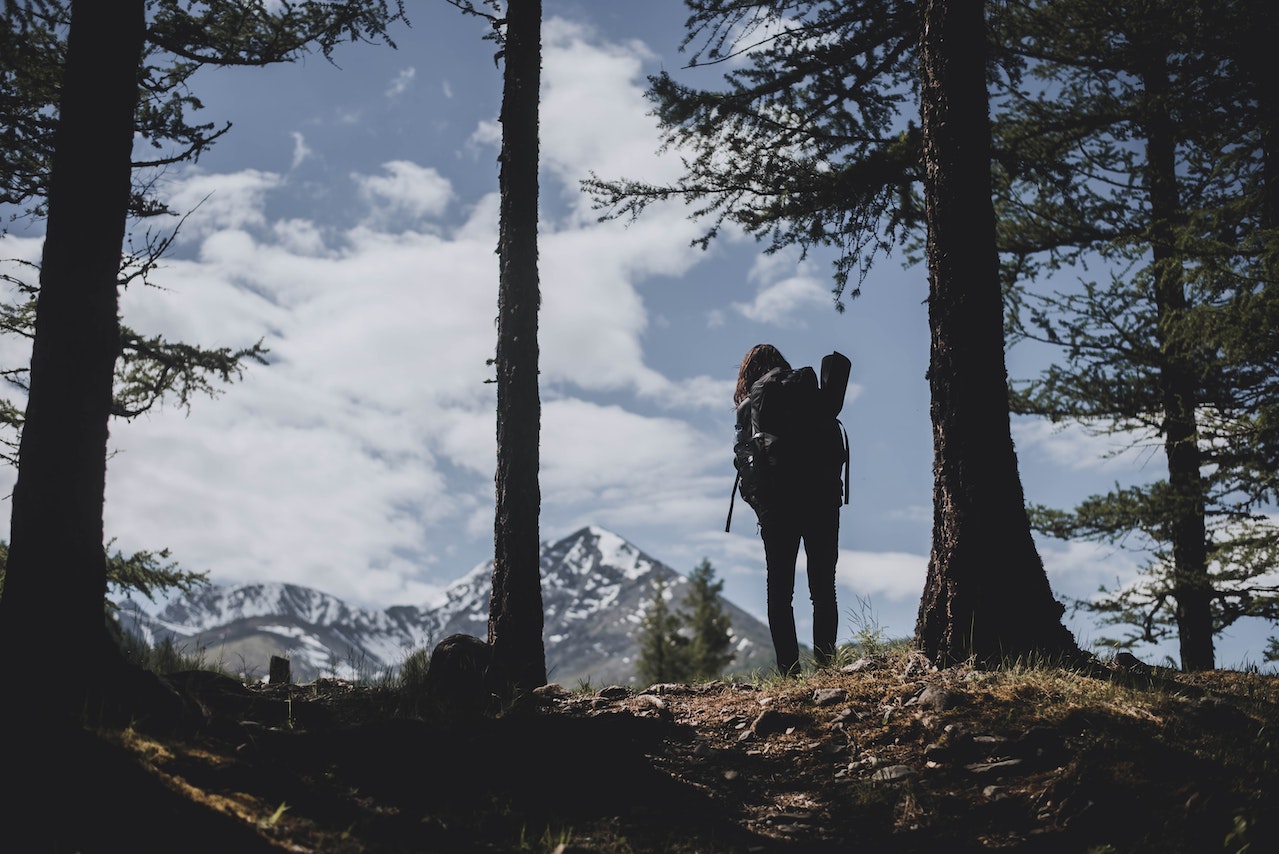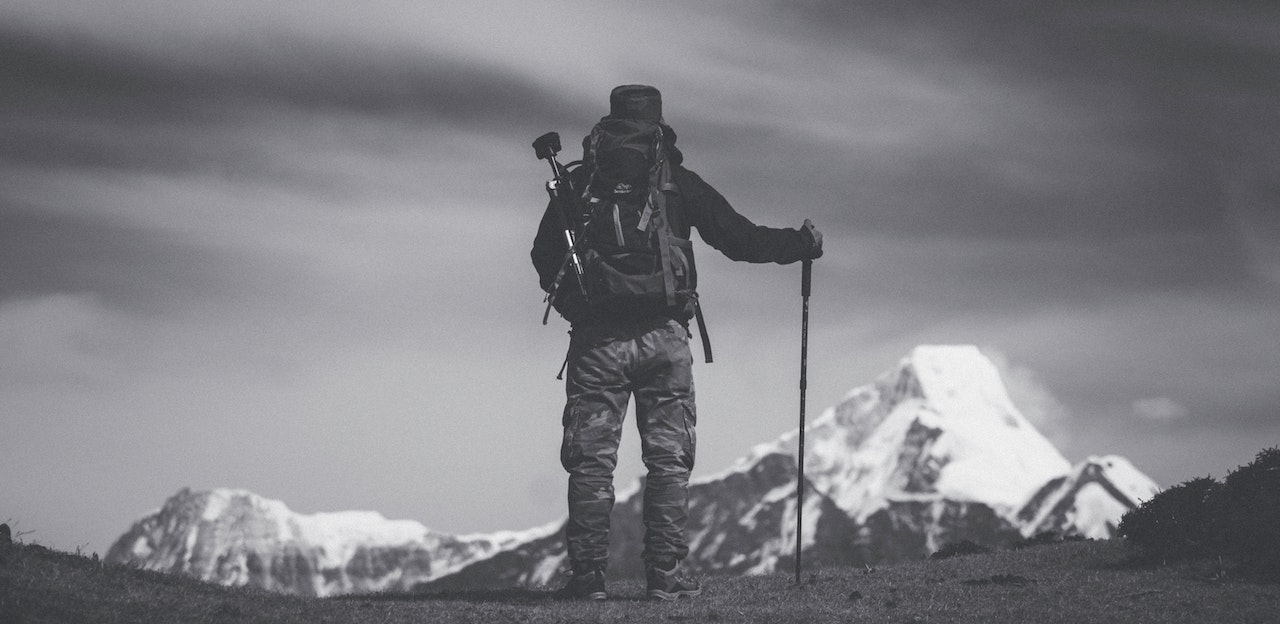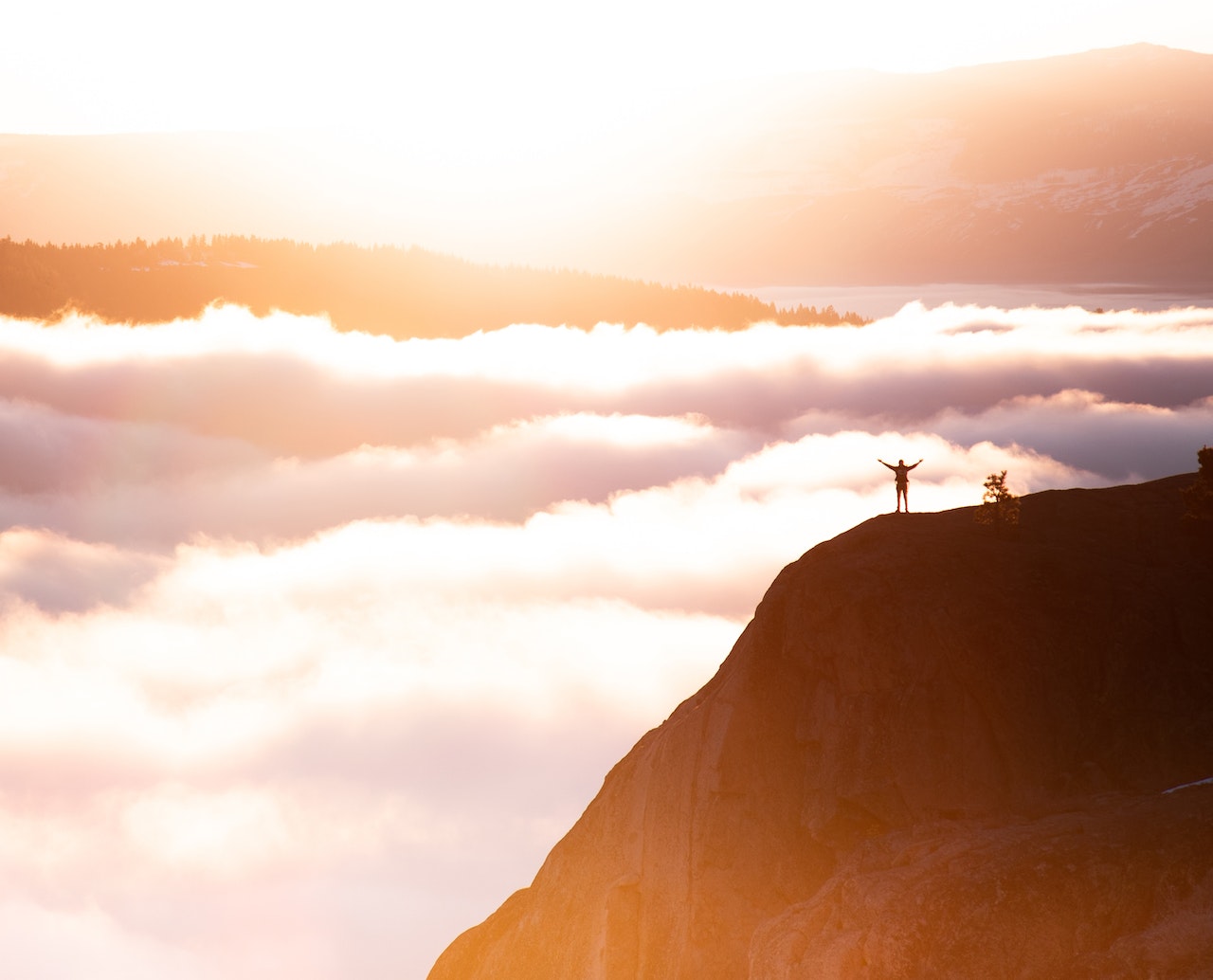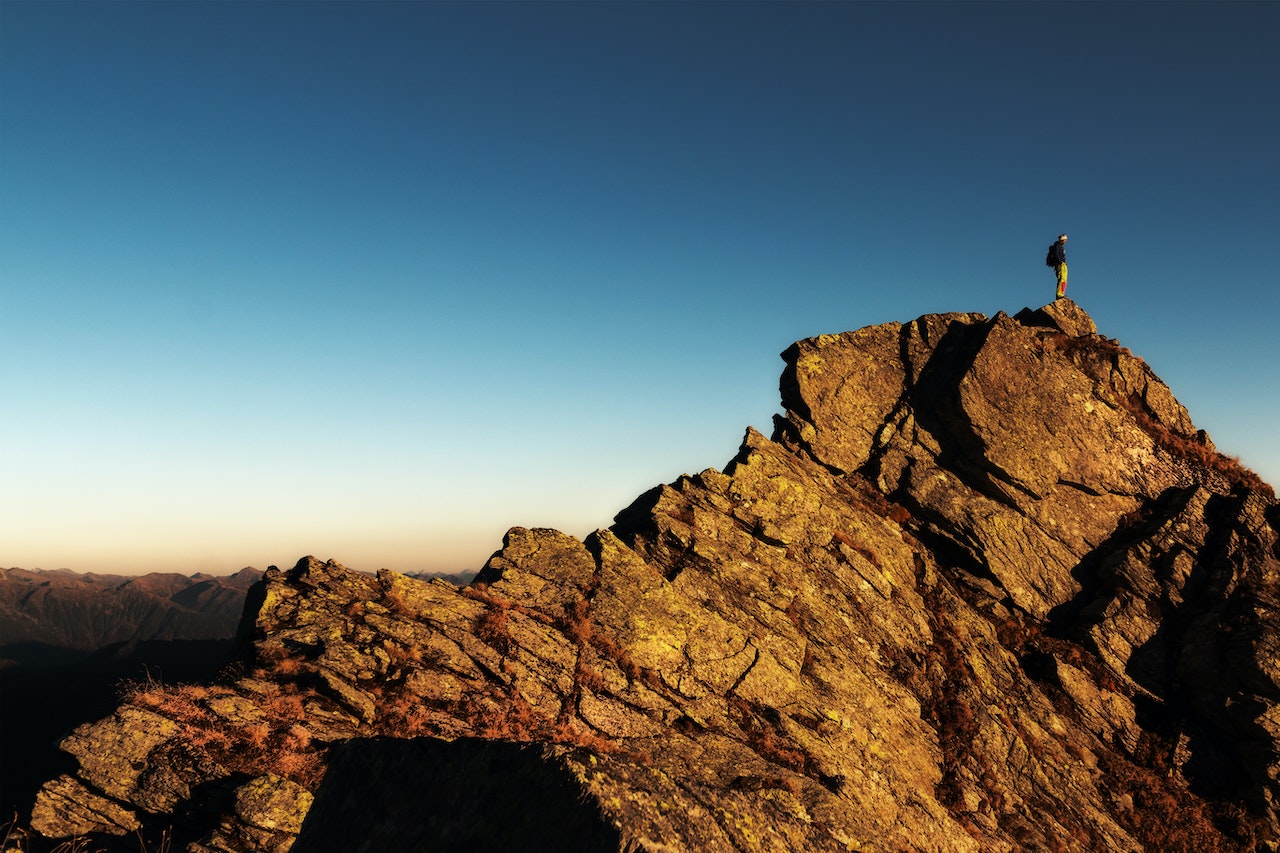High altitude hiking can be a rewarding and challenging experience that requires physical and mental preparation. Some of my most memorable and favorite hikes have been at high altitudes. There are generally less people astonishing views.


But hiking at high altitudes does come with its own unique set of challenges. The higher you climb, the less oxygen you get, and the more challenging it becomes to breathe. So if you’re planning for a high altitude hike, it is important to be properly prepared in order make sure that you’re able to complete the hike and also that you have a safe and enjoyable trek.
What is high altitude hiking?
High altitude hiking is when the elevation of the trail hits 5,000 – 11,500ft above sea level. Very high altitude is 11,500 – 18,000 ft, and extremely high altitude is above 18,000ft.
The effects of hiking at these altitudes on your body and your ability to do a hike at these elevations will largely depend on the base elevation of where you live and what you’re accustomed to. For me, I think of high elevation hiking as anything where the trail hits 8,000ft or above. That is where I start to really notice the impact of the elevation. It doesn’t need to start or stay above 8,000ft, but if the highest point of the trail is above 8,000ft, I will approach and train for that hike as a “high elevation hike”.


Effects of High Altitudes and Elevations on the Body
The higher you go, the thinner the air is and the less oxygen is available. This causes several physiological changes in your body. Your cardiovascular system will have to work harder to supply your organs with the oxygen they need since you are taking in less oxygen with every breath, leading to an increase in heart rate and heavy breathing. This then causes your body to produce more red blood cells in order to transport more oxygen to your organs more quickly to compensate. This process is known as acclimatization. As your body acclimates to higher elevations (produces more red blood cells), your breathing and heart rate will stabilize, making it easier to do more physical activity at the higher elevation.
But, without proper acclimatization, you may experience several forms of altitude sickness. Altitude sickness has several symptoms including: headaches, dizziness, fatigue, shortness of breath, and confusion. In severe cases, it can even be fatal.


Forms of Altitude Sickness
There are several types of altitude sickness that can happen at high elevations if you’re not prepared:
Acute Mountain Sickness (AMS)
AMS is the most common form of altitude sickness, affecting about 20% of hikers at elevations above 8,000 feet. The symptoms of AMS include headaches, nausea, dizziness, fatigue, and shortness of breath. The best way to prevent AMS is to acclimatize slowly, allowing your body to adjust to the higher elevation. Read more about how to avoid and recover from altitude sickness (AMA) here.
High Altitude Pulmonary Edema (HAPE)
HAPE is a severe form of altitude sickness that affects the lungs. It occurs when the blood vessels in the lungs constrict, causing fluid to build up, leading to shortness of breath, coughing, and chest pain. HAPE is a medical emergency and requires immediate treatment.
High Altitude Cerebral Edema (HACE)
HACE is a severe form of altitude sickness that affects the brain. It occurs when the blood vessels in the brain constrict, causing fluid to build up, leading to confusion, seizures, and coma. HACE is a medical emergency and requires immediate treatment.
How to Train and Prepare for High Altitude Hiking
There are 2 main things you can do to train your body for a high altitude hike: improve your physical fitness and set yourself up to acclimate to the elevation more quickly.


Altitude Acclimatization
Acclimatization is a critical part of preparing for high altitude hiking. Acclimatization involves exposing yourself to higher elevations gradually, giving your body enough time to adjust to the reduced oxygen levels. If you live at sea level, your body is going to have difficulty once you get to high elevations. But if you live in the mountains at 5,000ft, hiking at higher elevations is going to be a bit easier for you.
The best way try to help your body acclimatize faster is to practice doing it. Spend time at higher elevations as much as you can before setting out on your hike. For hiking at extreme altitudes, this is required and why there is a “base camp” at the start of the hike – to give hikers a few days to acclimate to the elevation before they start.
Even if you’re not hiking Mt. Everest, you should still practice and start training your body to get use to higher elevations with whatever options are available to you. When we hiked Half Dome (which is over 10,000ft), our nearby practice mountain to train on was Mt. Baldy. And as we were hiking Mt. Baldy, there were many other hikers there who were using that mountain as training for a bigger trek they had coming up (such as one was going to be hiking in the Himalayas)
The more gradual you can get your body used to exerting itself at higher elevations, the better. Even if the highest mountain you have around you is 3,000ft – practicing on that is still better than not practicing at all.
Physical Fitness
The better shape your body is in, the easier it’s going to recover from the lack of oxygen. Some of the best things that you can do to train for a high altitude hike is a combination of strength training, cardiovascular training, and interval training.


Start Early
Start your training early, six months before your hike would be ideal if you have the time. This will give your body enough time to adapt to the new conditions.
Strength Training
Strength training (lifting weights) can help you build muscles, which are necessary for carrying heavy backpacks and navigating challenging terrain. Focus on exercises that target your legs, back, and core, as they are the muscles you will use the most.
Cardiovascular Training
Cardiovascular training is essential to improving your stamina and endurance, which allows you to hike for longer periods of time without running out of breath. If your lungs and cardiovascular system are used to being “maxed out”, they will also be used to having to recover from that exertion and your recovery times will get shorter. There are lots of different things you can do to improve your cardiovascular endurance such as running, cycling, and swimming. Start slowly and gradually increase the duration and intensity of your workouts.
Interval Training
Interval training is when you alternate between high-intensity workouts and low-intensity rest periods while exercising. It’s been proven to be one of the most effective method for building endurance and improving lung capacity.
Consult a Doctor
If you have any medical conditions, consult your doctor before doing on a high altitude hike. Your doctor can advise you on the best way to prepare for the hike and reduce the risk of altitude sickness.
Tips for Hiking at High Altitudes & Preventing Altitude Sickness
Stay Hydrated
Make sure to bring plenty of water with you on the trail and drink regularly to stay hydrated. Start early and drink often (small sips, not gulps). It is also a good idea to bring electrolyte tablets or sports drinks to replace any minerals that may be lost through sweat. Water will help to flush extra toxins out of your body and helps to body to adjust to these new conditions more easily.
Pace Yourself
It is easy to become exhausted at high altitudes due to the thinner air, so it is important to take breaks and rest when needed. It is also a good idea to start out at a slower pace and gradually increase your speed as you become more comfortable and acclimated to the altitude. If you feel like you are over exerting yourself or if you start to get a headache, take a break. Allow your body to adjust.
Eat More Carbs and Less Protein
This is probably one of the only times when eating more carbs than protein is actually a good thing! When there’s less oxygen, your body uses more glycolysis for energy, which is basically your carbohydrate storage. You’re burn carbs at a faster rate, so you need to eat more of them. Proteins are some of the most difficult and energy-using things to digest. So when you’re at a high altitude, you want to make it as easy as possible for your body to get energy, which is via easy to digest carbs rather than difficult to digest proteins.
Avoid Alcohol
When hiking at high elevations, your body is already stressed. Alcohol is only going to exasperate any problems that are already going on. With less oxygen in your blood, you’re going to feel the effects of the alcohol on your body a lot more intensely and quickly than you normally would. Even for people visiting areas that are at high elevations and not exerting themselves by hiking, alcohol will often cause headaches if you’re not use to the elevation.
Important Differences Of High Elevations vs Sea Level
Not only does your body react differently to the lower amount of oxygen available at high elevations, but everything around you does too. There are a few important key differences to keep in mind when you’re hiking or camping at high elevations.


Temperature Variations
At higher elevations, the temperatures fluctuate widely and more quickly, with hot days and cold nights. It’s important to bring appropriate clothing and gear to stay warm and dry in changing weather conditions.
Longer Boiling Times
Water will take longer to boil at high altitudes due to the lower atmospheric pressure. This means you’ll need to factor in more time when cooking or making hot drinks.
Longer Cooking Times
Food will also take longer to cook at high altitudes, as the lower atmospheric pressure affects cooking times. You may need to adjust your cooking times and methods to ensure your food is fully cooked.
Longer Re-hydration Times
If you’re camping at a higher elevation and are eating dehydrated meals, it will take longer for your meals to re-hydrate. Plan on double the amount of time that it says on the packaging for every 8,000ft above sea level.
Dehydration
At high altitudes, water evaporates more quickly. You may not feel as thirsty as you normally would, but it’s important to drink plenty of water to prevent dehydration and to be sure to use a good moisturizer and lip balm.
Sun Exposure
At high altitudes, you’re closer to the sun and there’s less atmosphere, so the UV rays are stronger, which means you can get sunburned more easily. Be sure to wear extra sunscreen, hats, sunglasses etc. to protect yourself.





